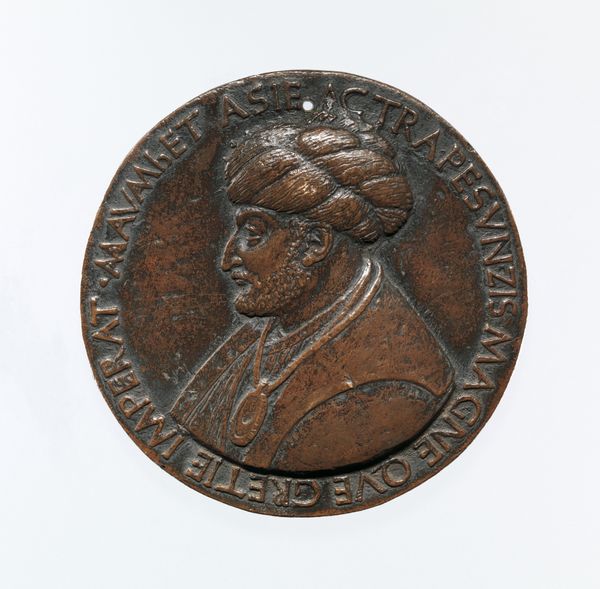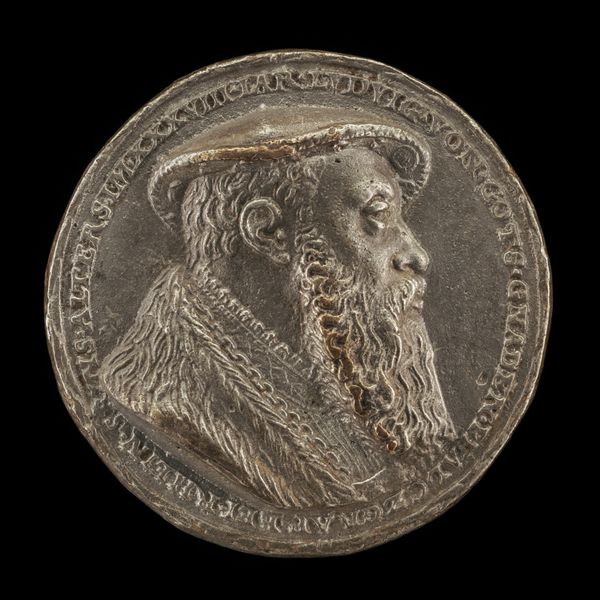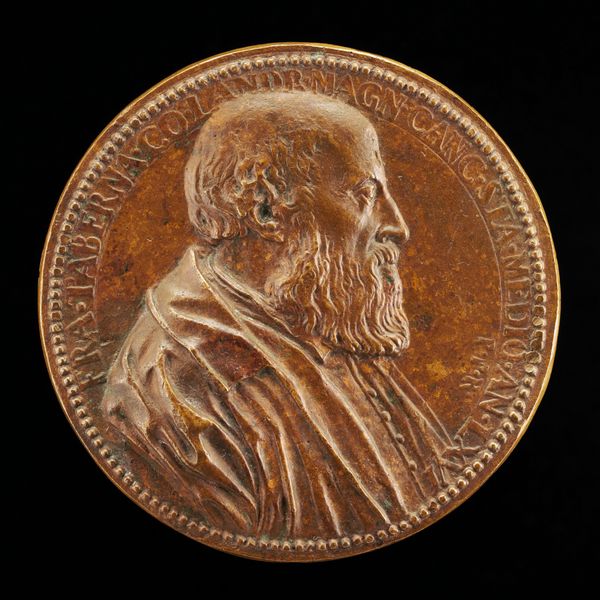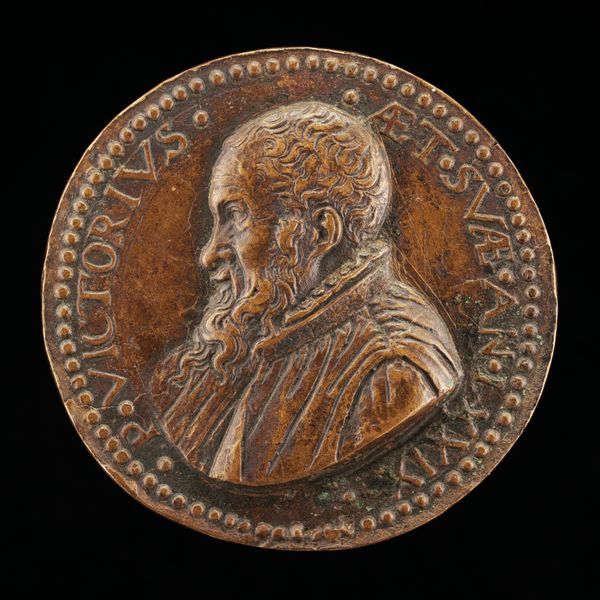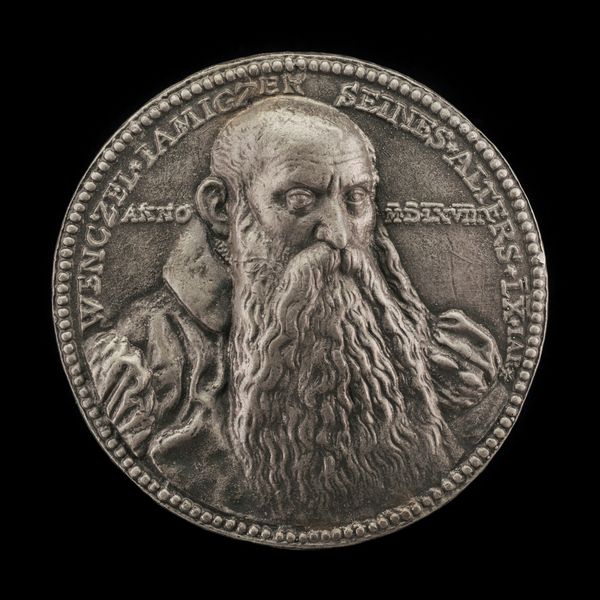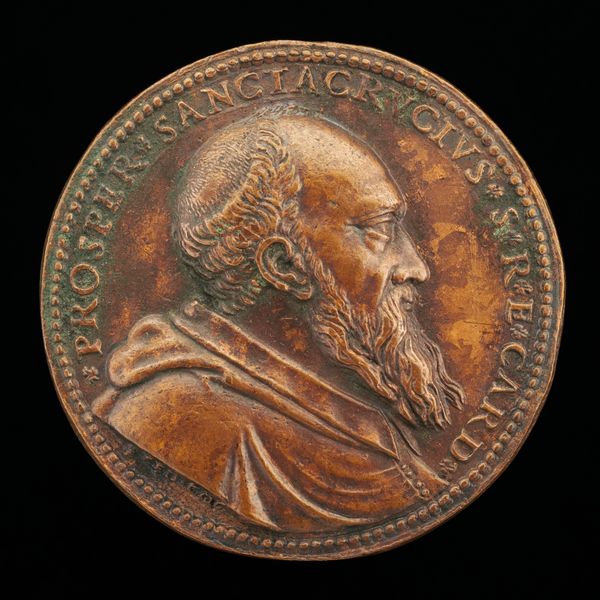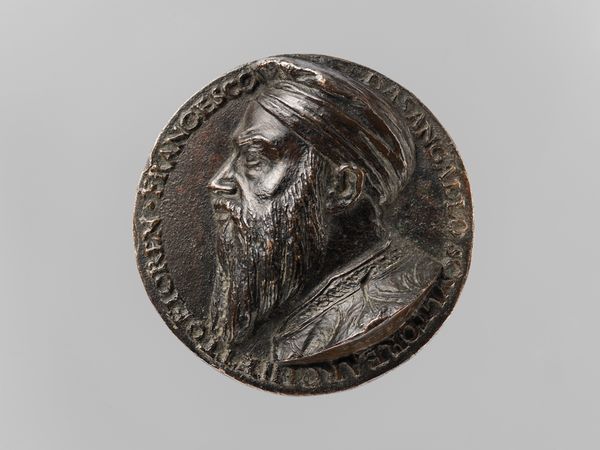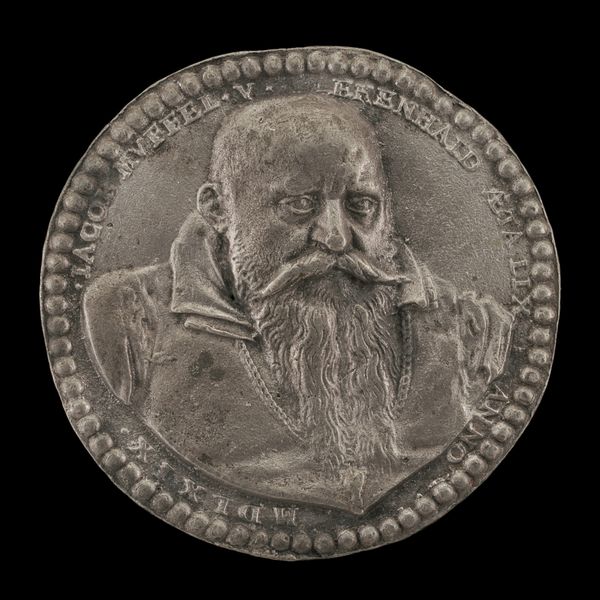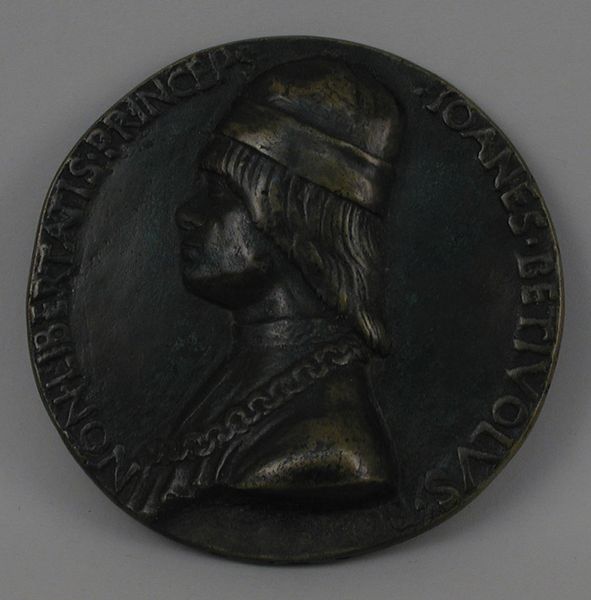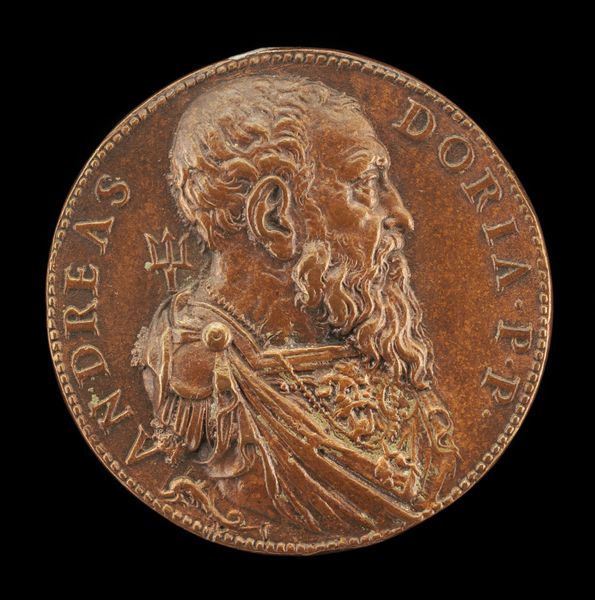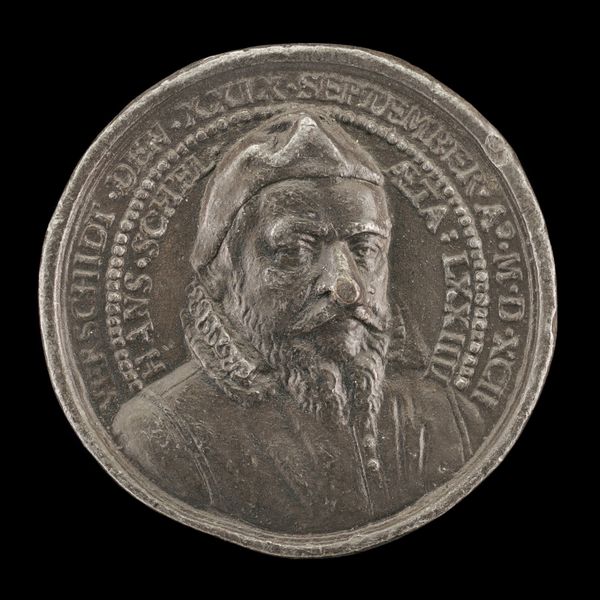
bronze, sculpture
#
portrait
#
stone
#
sculpture
#
bronze
#
11_renaissance
#
sculpting
#
sculpture
#
decorative-art
#
profile
Dimensions: Diameter: 2 11/16 in. (68 mm)
Copyright: Public Domain
Curator: Here we have a bronze portrait medal of Francesco da Sangallo, dating to 1551. You can find it here at the Metropolitan Museum of Art. Editor: The dark bronze gives it a stern, almost brooding quality, doesn’t it? The detail is striking for something so small and circular. Curator: Indeed. Medals like these were miniature monuments in the Renaissance. Think of them as early forms of celebrity endorsement, celebrating civic leaders, artists, and even intellectuals. This particular piece commemorates Francesco himself. Editor: The profile view is classic—reminiscent of Roman emperors. It evokes a sense of authority and timelessness, doesn’t it? That carefully rendered beard probably also speaks volumes. Beards often signal wisdom, status, or a connection to tradition. Curator: Absolutely. These medals functioned as tools for shaping and solidifying reputations. Artists in the Renaissance were very aware of their social standing and sought to be remembered. It’s more than just a likeness. It is a declaration. The inscription around the perimeter is a form of self-promotion, marking him as Florentine. Editor: The inscription must have also contributed to the artwork's talismanic properties. Even now, looking at his image, there’s an implicit sense of enduring presence. Perhaps these images are intended to defeat death. Curator: You touch on something important. While certainly a demonstration of worldly status, there was an element of grappling with mortality that spurred the artistic production of Renaissance Italy. Editor: It leaves me considering the weight of legacy—how we construct our public image and hope to be seen long after we are gone. Curator: It’s a reminder that art serves not only as aesthetic enjoyment, but also as historical witness. A public act with political and social dimensions.
Comments
No comments
Be the first to comment and join the conversation on the ultimate creative platform.
